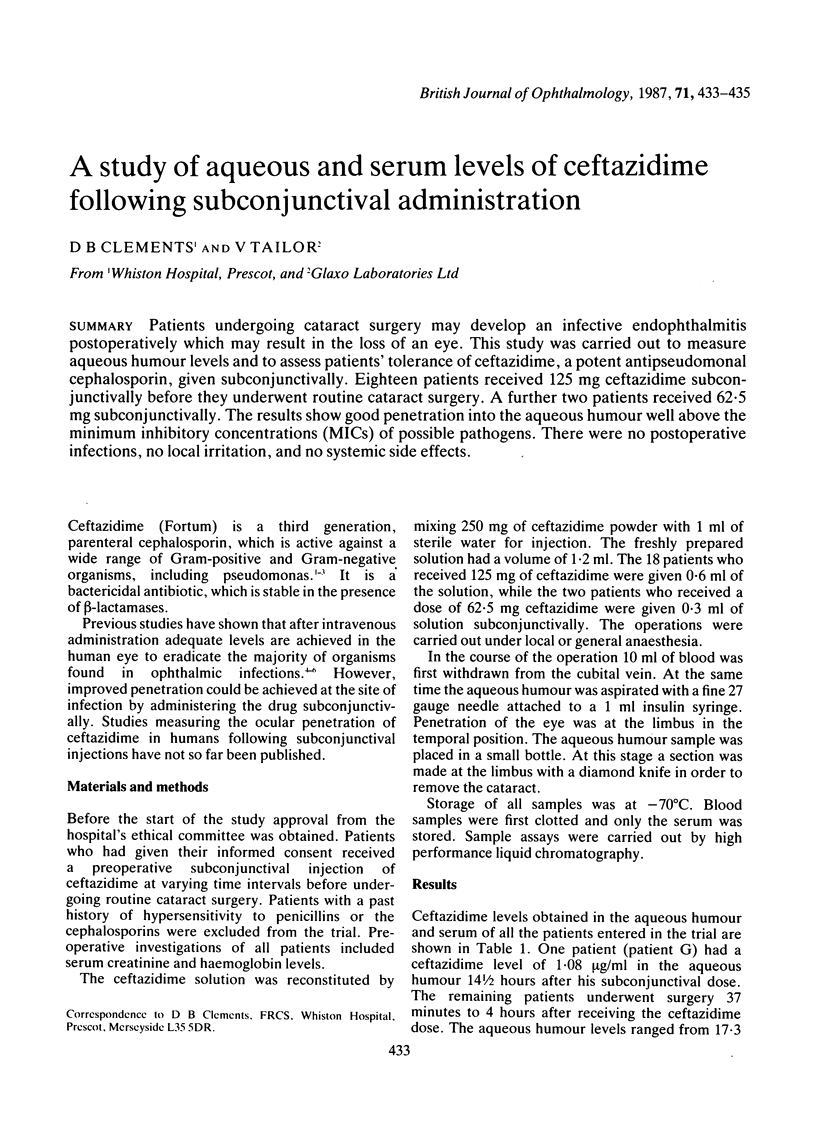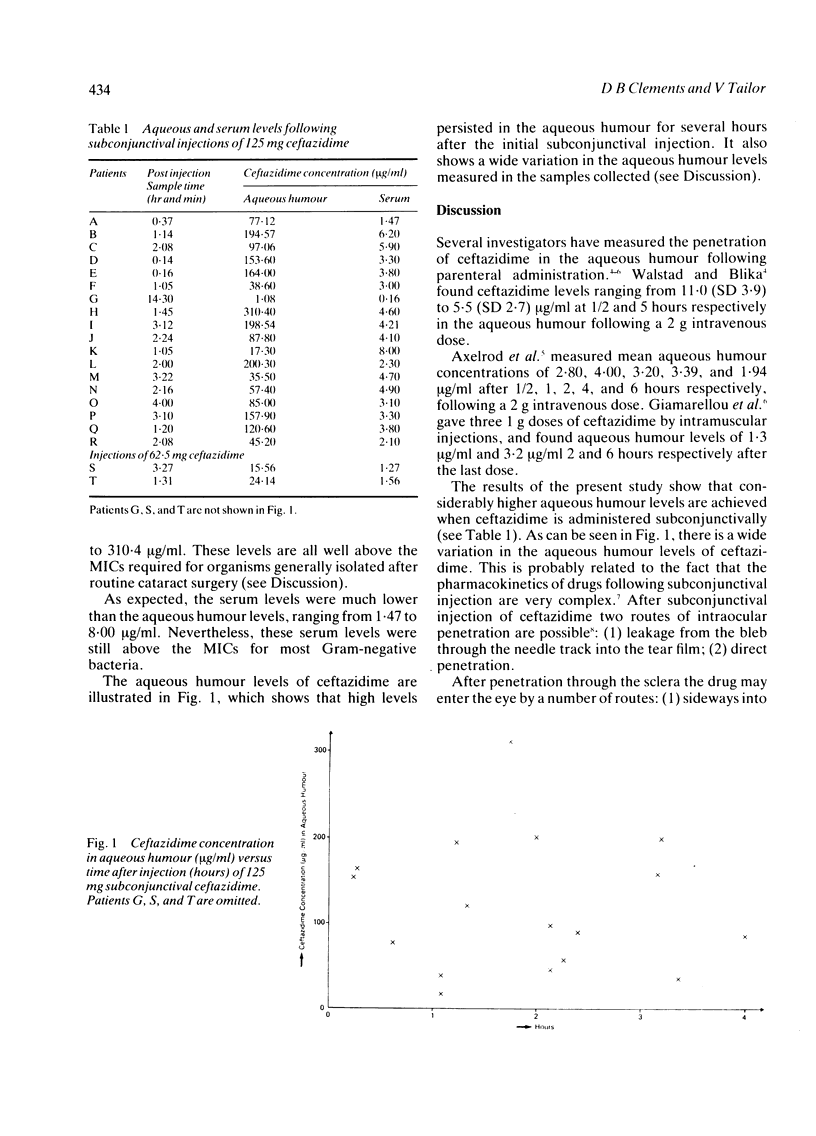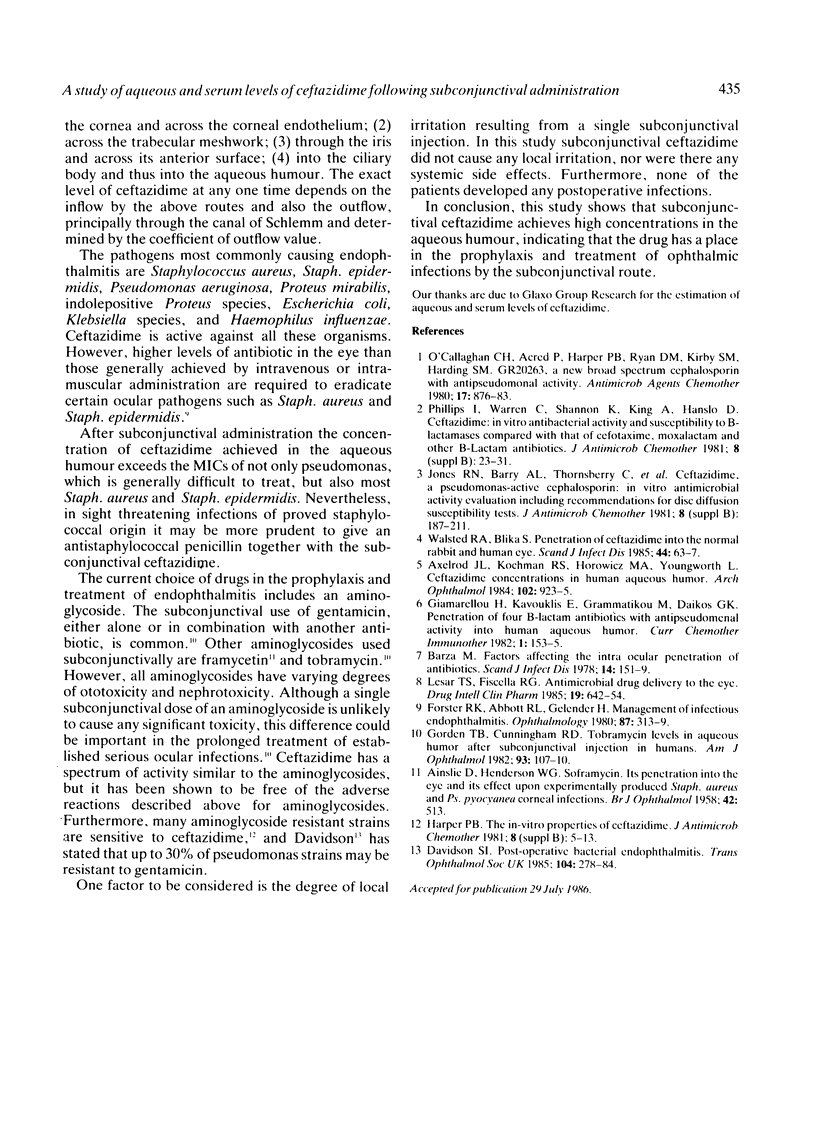Abstract
Patients undergoing cataract surgery may develop an infective endophthalmitis postoperatively which may result in the loss of an eye. This study was carried out to measure aqueous humour levels and to assess patients' tolerance of ceftazidime, a potent antipseudomonal cephalosporin, given subconjunctivally. Eighteen patients received 125 mg ceftazidime subconjunctivally before they underwent routine cataract surgery. A further two patients received 62.5 mg subconjunctivally. The results show good penetration into the aqueous humour well above the minimum inhibitory concentrations (MICs) of possible pathogens. There were no postoperative infections, no local irritation, and no systemic side effects.
Full text
PDF


Selected References
These references are in PubMed. This may not be the complete list of references from this article.
- AINSLIE D., HENDERSON W. G. Soframycin: its penetration into the eye and its effect upon experimentally produced Staph. aureus and Ps. pyocyanea corneal infections. Br J Ophthalmol. 1958 Sep;42(9):513–517. doi: 10.1136/bjo.42.9.513. [DOI] [PMC free article] [PubMed] [Google Scholar]
- Axelrod J. L., Kochman R. S., Horowitz M. A., Youngworth L. Ceftazidime concentrations in human aqueous humor. Arch Ophthalmol. 1984 Jun;102(6):923–925. doi: 10.1001/archopht.1984.01040030743035. [DOI] [PubMed] [Google Scholar]
- Barza M. Factors affecting the intraocular penetration of antibiotics. The influence of route, inflammation, animal species and tissue pigmentation. Scand J Infect Dis Suppl. 1978;(14):151–159. [PubMed] [Google Scholar]
- Davidson S. I. Post-operative bacterial endophthalmitis. Trans Ophthalmol Soc U K. 1985;104(Pt 3):278–284. [PubMed] [Google Scholar]
- Forster R. K., Abbott R. L., Gelender H. Management of infectious endophthalmitis. Ophthalmology. 1980 Apr;87(4):313–319. doi: 10.1016/s0161-6420(80)35241-x. [DOI] [PubMed] [Google Scholar]
- Gorden T. B., Cunningham R. D. Tobramycin levels in aqueous humor after subconjunctival injection in humans. Am J Ophthalmol. 1982 Jan;93(1):107–110. doi: 10.1016/0002-9394(82)90708-5. [DOI] [PubMed] [Google Scholar]
- Lesar T. S., Fiscella R. G. Antimicrobial drug delivery to the eye. Drug Intell Clin Pharm. 1985 Sep;19(9):642–654. doi: 10.1177/106002808501900905. [DOI] [PubMed] [Google Scholar]
- Walstad R. A., Blika S. Penetration of ceftazidime into the normal rabbit and human eye. Scand J Infect Dis Suppl. 1985;44:63–67. [PubMed] [Google Scholar]


